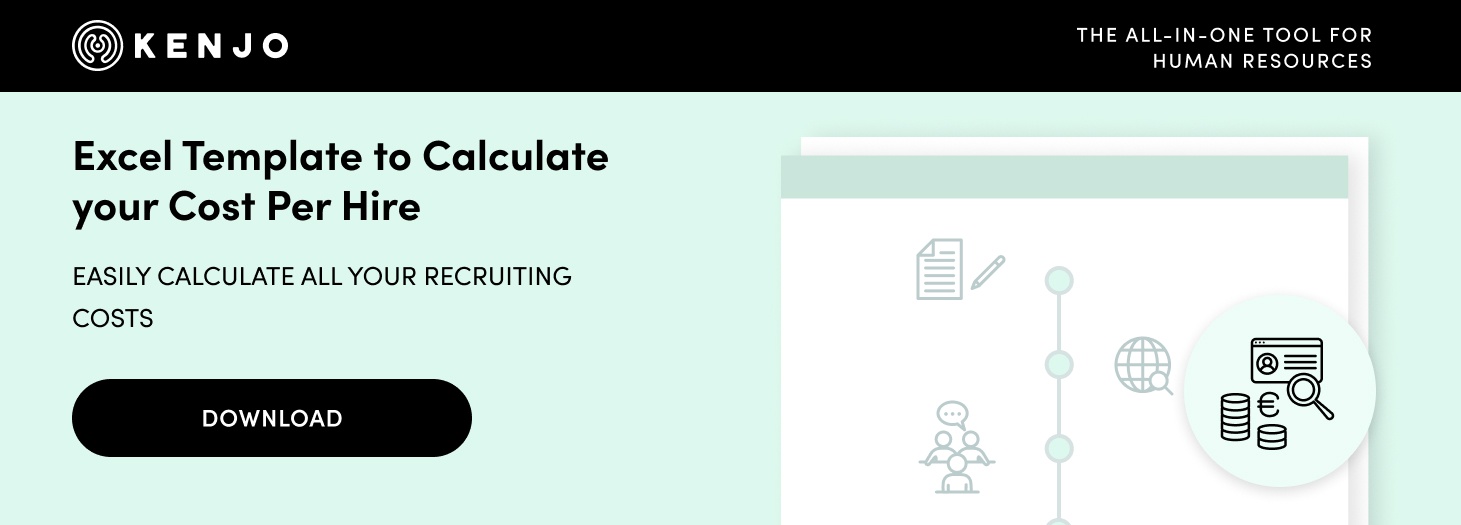What are your recruiting KPIs and metrics? If you don’t already measure and evaluate your hiring processes, we’ve picked out the most important ones to get you started with your own KPI dashboard.
What are recruiting KPIs?
Recruiting and selection KPIs or Key Performance Indicators are metrics used to calculate the efficiency of the hiring process and hiring team.
When used correctly they can be an effective tool to measure and subsequently evaluate the processes or tasks involved in staff recruitment.
They give us an indication of how close we are to reaching our recruitment goals and highlight the changes we need to make to achieve them.
The importance of measuring recruitment and selection processes
Human resources specialists often find it a challenge to identify key recruiting and selection metrics to measure the success of the hiring process. However, it is the only way to improve and optimise these internal processes.
Even a simple analysis can inspire ideas for improvement to deliver short term results. For example, reducing the time-to-hire can have a positive impact on financial figures, as every day a position remains vacant it costs the company money.

The 10 most important recruiting KPIs
Hiring metrics should form an essential part of recruitment strategy so we can monitor the process and introduce improvements gradually.
The best way to do this is with a dashboard which includes some of the principal metrics:
1. Qualified candidates per vacancy
When it comes to candidate applications, it’s a case of the more the merrier, as this gives the company more options to choose from. However, attracting many unqualified candidates is a clear waste of time for the recruiter. A high percentage of unsuitable applications is also a sign that the vacancies have not been advertised in the right places.
To find out if there is an issue, it is best to review the proportion of qualified candidates per vacancy. In other words, the number of people or the percentage applying for the position that are actually qualified to take it on.
2. Rate of unfinished applications
It’s not uncommon for some applicants to begin an application and then, for whatever reason, leave it unfinished. If you find you have a high rate of unfinished applications, it may be that your registration process is simply too long. The last thing you want is to lose out on in-demand talent, so take care to control the rate of unfinished applications.
To calculate the ratio, divide the number of applications received by the number of candidates who started an application.
3. Recruitment source quality
This is one of the most important recruiting KPIs, as it measures the quality of each of the sources we are using to recruit candidates (LinkedIn, job portals, etc). Perhaps one sends you 50 CVs, but just two are suitable, while another only provides 25 CVs but 10 are a potential match. This information will allow you to target the sources that deliver positive results to optimise the company’s investment.
How do you measure the quality of a source? By identifying the candidates who have advanced to later stages of the selection process and finding out where they originally applied. Once you have these statistics, divide the number of quality candidates from each source by the total number of candidates who applied via this channel. That will give you a ratio to compare.
4. Average number of interviews per hire
Candidate interviews takes a great deal of time, so it’s important to hold just the right amount to find the best candidate. No more, no less. Having an average figure in mind will help you better understand how many candidates you need, how many should participate in each round of interviews, and whether you can do some by phone, etc.
By the way, if you are looking for a recruiting software to streamline your recruiting process, check out our best recruiting software of 2022 article which highlights and compares the best software on the market today.
5. Time-to-hire
The time-to-hire is the time required to shortlist, interview, and hire a new employee. It starts from the moment the candidate applies until they receive an offer.
This metric measures the efficiency of the hiring process, which includes screening CVs, assessments and interviews carried out. It may bring issues to light, but above all it helps to define and refine the strategy.
According to Hire Vue, the average time-to-hire lasts between 14 and 63 days depending on the sector.
The calculation is one of the simplest, you just need to count the number of days between application submission and start date.
6. The hiring cost
Bringing someone new into a company always means an investment (of time, resources, money). If you want to control the hiring costs, you need to know how much you are spending. The average cost of the whole process should include:
- Costs related to the time-to-hire.
- Time spent by managers and employees involved in the process.
- Administration costs linked to new employee training and onboarding.
We advise you work out the total average cost of hiring, as well as the cost according to the candidate’s experience, to analyse if quality relates directly to the investment made.

7. Offer acceptance rate
Hiring is a two-way process and offers are not always accepted. While we can’t expect a 100% success rate, a high percentage of candidates declining a final offer should be seen as a warning sign. As such, the acceptance rate is one of the KPIs to watch.
Just divide the number of offers accepted by the total number of offers made to find out the rate.
8. Rate of candidates who leave during the first year
When an employee decides to leave a company it can prove expensive, and a higher leaving rate can be a symptom of a negative working environment. Moreover, if resignations are happening during the first year after joining, there are likely to be deeper issues: unrealistic work expectations, toxic culture, etc.
To calculate the leaving rate during the first year, divide the number of employees who leave before their first anniversary by the total number of employees who left during the same period.
If you get a high result, take a good look at the hiring process, onboarding and even observe the general company culture to see what you can improve.
9. Candidate satisfaction
Candidate satisfaction involves measuring the experience of applicants and how they have felt during the process. The better the result, the better the chances that professionals will not voluntarily give up halfway through the process.
To obtain this data, we recommend sending a survey to participants after the selection process asking them to rate their satisfaction from 1 to 10. This will give you an average which you can monitor over time.
10. Recruiter satisfaction
The company should also monitor the wellbeing of its recruiters, as the success of the hiring process depends on them. So, like the above example, ask your recruitment specialists how satisfied they are and calculate an average. Give them the opportunity to comment or provide additional feedback to help you improve in the future.



